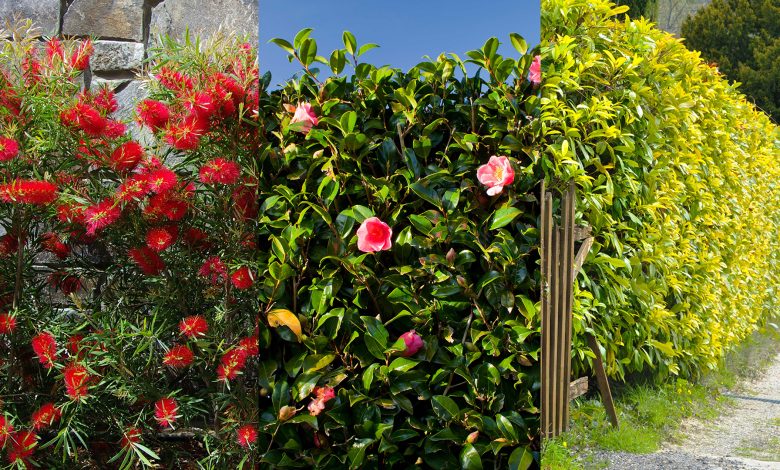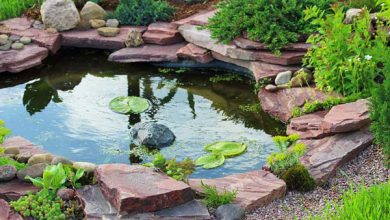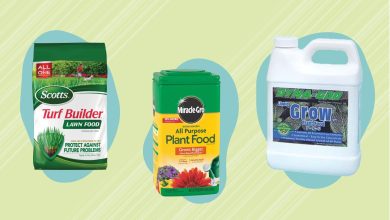10 Reasons to put hedges in the garden: The best tips

Today I am going to talk to you about the importance of hedges in the organic garden. We have already seen in a post like the one on Organic Agriculture and Urban Gardens what are the good practices that should be carried out if what you want is to grow organic food . Actions that help increase the diversity of species in the orchard and its surroundings, favor pollination or protect the soil from erosion are some of these practices. Hedges can play a fundamental role in the organic garden since these objectives are achieved with them.
Logically, if you have a flower pot, a table garden or other types of cultivation containers, it is not the case to talk about hedges; but if you have a small or large garden or an orchard and you have enough space, it can be very interesting to plant a perimeter hedge or even hedges to divide the different areas of the orchard. In this post I will explain why and how to do it right.
Ten benefits and uses of hedges in the garden
- The hedges serve as an enclosure, establishing the limits of the orchard in a more aesthetically pleasing and natural way than a brick wall or fence.
- They protect the plants if we have problems with strong winds or prevailing winds in a certain direction.
- They are a vegetal barrier that not only protects the plants, but also protects the soil from erosion and runoff, which cause the structure and adequate amount of water for the substrate to be lost.
- They contribute to the increase of biodiversity, one of the basic aspects of organic farming. With the hedge, new plant species are introduced into the garden, but also insects and microorganisms.
- Food sources increase and a varied habitat is created, favoring the presence of auxiliary insects that are beneficial to the garden, such as pollinators or those that are natural enemies of some garden pests.
- They collaborate in the creation of a more suitable microclimate, providing shade and humidity.
- They are a source of food and shelter for insects, birds or small mammals, which prevents them from passing to the plants in the garden to feed and become pests.
- The hedge is an «ecological corridor», a transit area that makes it possible for insects to move outside or inside the orchard and to reproduce.
- Producers of wood or organic matter that can be reused in the organic garden to make compost, mulching, etc. (Recycling is also one of the bases of Ecological Agriculture).
- Species that provide us with fruits such as blackberries, raspberries, blueberries can be used... that we can harvest and use in our desserts or to make delicious homemade jams.
How should the hedges be in the garden?
– Experts recommend wide and dense hedges (at least one meter wide) to achieve a strong and diverse ecosystem that can be a good refuge for beneficial fauna.
– The hedge must be varied, made up of different types of species: plants of various sizes, perennial and deciduous, with distributed flowering and fruiting (not all the bushes or clumps of plants flower or bear fruit at the same time, but rather flowering spread over time), with woody and herbaceous plants at the base that help maintain moisture and further protect the soil…
– Use species with hollow stems or soft pith, such as alder, elder or raspberry, as they favor the nesting inside of beneficial insects such as bees.
– Plant young plants (60-90 cm high) that are more likely to take root in the new land and are also cheaper than older ones.
– Plant in autumn after having prepared and fertilized the land properly.
– Put the bushes or bushes of the hedge at a distance of approximately one meter.
– If you want to avoid having to remove the “weeds” you can often cover the soil at the base of the plants with mulching of straw, rocks or vegetable fiber mesh.
– Irrigation is important, especially at the beginning so that the plants take root well in the ground and also in those fruit bushes such as raspberry or blueberry, which need a lot of water. You can put a drip irrigation and forget about it.
– The maintenance that hedges need is not too much, but they should be trimmed a couple of times a year, once in mid-summer and once in winter.
What species to plant in the hedge?
In the next post Interesting species for hedges in organic gardens I will talk about the most used plants for hedges in gardens and why they are useful. We miss you! Fundamental if you want to make the most of the functions of hedges in the orchard.


![Photo of Carrot Fly (Psila rosae): [Characteristics, Detection, Effects and Treatment]](https://www.complete-gardening.com/wp-content/uploads/2022/08/carrot-fly-psila-rosae-characteristics-detection-effects-and-treatment-390x220.jpg)

